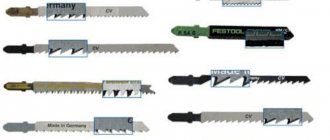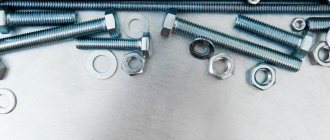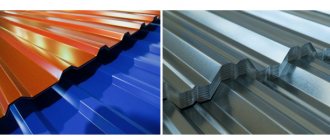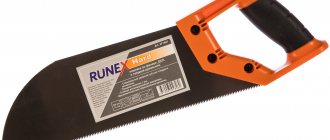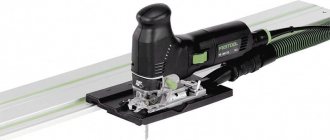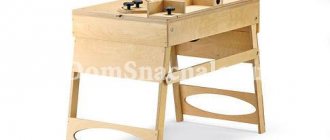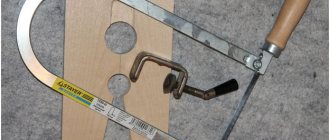Most varieties of hand-held power tools are only mechanisms that drive the executive body. As a rule, it is a replaceable equipment designed to perform specific tasks.
The jigsaw in this regard is a typical representative of its group, unable to work without a cutting tool - a file. There are a lot of them, there are corresponding varieties for all materials, processing methods and conditions. The larger the arsenal of cutting attachments a master has, the wider his capabilities. Let's take a closer look at them.
What it is?
A jigsaw file is a blade equipped with teeth of one type or another, fixed at one end to the movable rod of the tool. Since all materials have their own properties and characteristics, a large number of varieties are produced. They are designed to solve various problems, cutting certain materials. As a rule, craftsmen purchase sets of several types of cutting tools.
Selection criteria may be:
- The most popular and common types of cutting.
- Purpose for a particular material.
- Creation of a universal set that allows you to perform most types of processing.
Separate, specialized samples are also available for sale. They are purchased to perform specific work according to previously known parameters of the material and cutting conditions. The choice of file type is determined by the user’s level of training, experience and knowledge. In order to avoid mistakes and choose the best option, you should study the features and characteristics of the cutting tool.
Mounting features
This is the first place to start exploring the range. If it later turns out that a file correctly selected according to all other criteria is not suitable for a particular jigsaw model, then you will have to go back to the point of sale and make an exchange. And this can happen, since the tool differs from different manufacturers, including in the specifics of fastening the file.
In the document for the electric jigsaw, the manufacturer must indicate the type of file that is suitable for this model. If the instrument is purchased second-hand (especially without documents, used) or rented, this point must be clarified immediately. Otherwise, you will have to take a jigsaw with you when visiting the store.
Types of files, technical characteristics
All files are produced for specific types of cutting.
They can solve specific problems:
- Clean cut
- High-speed sawing of material.
- Sawing out openwork patterns, precise figures.
- Cutting hard materials, steel or aluminum.
- Working with certain materials.
All these operations require the use of fabrics that have the appropriate characteristics.
Let's look at them in order:
Tooth shape, cutting edge geometry
The type and shape of the teeth are the main factors determining the performance and quality of the cut.
There are different types of saws that can be divided according to certain characteristics.
Based on the geometry of the cutting edge, the following types are distinguished:
- Separated canvases.
- Flat files with no streaks.
According to the method of cutting teeth:
- Milled
- Sanded
Depending on the combination of these parameters, the following options are distinguished:
- Milled, with wiring . The teeth are created using a milling machine. Externally, they are distinguished by the rounded shape of the cavity between two adjacent teeth. They can have a classic type of setting (alternately inclined to the sides), or a wavy type of setting (several teeth inclined in different directions with a variable amount of deviation from the axis). The former are used for quick and rough cutting on soft materials (wood), the latter - for cleaner cutting of wood, chipboard, plywood, etc.;
- Polished with routing . They have triangular teeth with a classic set. Capable of cutting wood, chipboard, plywood, MDF, etc. relatively cleanly;
- Polished without routing . Canvases with a flat surface. There is no set of teeth, which allows you to get a thin and accurate cut of clean materials - laminate, finished wood, plastic, etc.
In addition to the shape, the size and pitch between the tips of the teeth plays a significant role. The smaller they are, the cleaner the cut will be. At the same time, as the size decreases, the productivity and speed of sawing materials decreases. Typically, saw blades with fine cuts are used when laying floor coverings, fitting additional elements of door or window blocks, and other precise and clean work.
In addition, there are blades with different directions of the tooth tips. They usually point upward (toward the shank), which provides a cleaner edge on the underside. However, there are samples in which the notch is directed away from the shank. These blades are used for cutting laminate or other materials that require a neat and clean edge.
Shank types
There are several types of saw blade shank:
- T-shaped . This is the most common type and fits almost all clamp types. Sometimes it is called the “Bosch shank”, since it was first developed by engineers from this particular company. This leadership has become the reason for its versatility - files of this type can be used with jigsaws from all manufacturers;
- "Bosh" shank. This is the original version of the T-shaped base of the canvas. It has two transverse projections that serve as a stop for fixing the file. Suitable for older models of Bosch jigsaws;
- U-shaped . It is an American standard connection unit. It does not have any specific features; it is a simple rectangular plate with a hole near the teeth and a semicircle-shaped recess at the end. Used in conjunction with old imported jigsaws;
- Makita shank . A rectangular plate with two through holes of different diameters. Only suitable for older Japanese Makita instruments.
Expert opinion
Levin Dmitry Konstantinovich
Currently, blades with a T-shank predominate. They have supplanted all alternative options, so when choosing, you should rely on this type of connecting unit.
Canvas dimensions
The linear parameters of the saw blade are expressed by two indicators:
- Length
- Width
The length of the file is an indicator of the thickness of the material that can be cut using this tool. For household jigsaws it is limited to 75 mm, for professional ones - up to 135 (sometimes up to 150) mm. It must be taken into account that the most loaded part will be the area located near the attachment point. Since the stroke of the rod usually does not exceed 20 mm, the maximum load falls on the part of the cutting body located close to the jigsaw platform.
The longer the blade, the greater the likelihood of it slipping when sawing, especially when turning. It is better to cut thick parts with tools with a more rigid working body.
The width of the blade is an indicator that demonstrates the ability to make curved cuts. The wider it is, the smaller the turning radius. There are special files for openwork carving, the width of which is only 3 mm. At the same time, wide blades are produced to ensure the stability of straight cutting of the material.
In addition, one more dimension must be taken into account - the thickness of the canvas. It is selected in accordance with the characteristics of the material being processed - the thinner it is, the smaller the thickness of the file should be selected.
Wiring
The larger it is, the wider the cutting line. But this increases convenience and speed, since the wood “dust” is removed faster. Sometimes the teeth deviate in different directions in separate groups. These files are suitable for working with plastics, color/metal and soft wood.
Type of material to be processed
Initially, a jigsaw was created for cutting wood. Accordingly, replacement equipment was made for this material. However, it quickly became clear that the tool’s capabilities are much wider; almost any material can be cut. The only condition is the use of appropriate fabric. Currently, different groups of paintings have been created:
For wood and its derivatives
The number of wood saws exceeds all other groups.
There are different options:
- For fast cutting. These are long blades with large set teeth, providing high productivity and cutting speed;
- For a clean cut. The blades of this group are equipped with relatively small teeth and have virtually no teeth;
- Narrow files with fine teeth provide a shaped cut. Sometimes they have a notch on both sides, which allows you to make turns with a small radius.
Expert opinion
Levin Dmitry Konstantinovich
In addition, for cutting veneered chipboard or clean sawing laminate, blades with a reverse tooth (directed from the shank) are made. It is more difficult to work with such equipment, since you will have to constantly monitor the position of the jigsaw and fight the buoyancy force.
For metal
The size of the teeth of such files is approximately the same as the size of the notch on the blades of hacksaws for metal. The geometry of the cutting edge is also similar - the wavy pattern helps protect the blade from excessive heat.
There are special types of files for different types of material:
- For steel
- For aluminum
- For non-ferrous metals
Expert opinion
Levin Dmitry Konstantinovich
In practice, metal only needs to be cut occasionally, so keeping a steel file handy is sufficient. It can also cut other, softer metals.
For plastics and polymers
Plastic can be sawed with a wood blade with large or medium teeth. However, you can use equipment with a fine notch if you have to cut hard types of material. The main condition will be to control the heating of the blade - heated plastic clogs the teeth and spoils the edge, and also reduces productivity. There are special types of files for cutting plexiglass, PVC and other polymer materials.
Special types of canvases
A jigsaw can cut very hard materials, such as glass or ceramics. For this purpose, files without notches, coated with diamond, are used. There are sheets for drywall equipped with soldered teeth made of hard alloys. For soft materials such as rubber, cardboard, etc., special blades are used. They do not have regular teeth, but instead have wavy blades, similar to kitchen knives. There are also universal saws that can cut most materials. However, it is impossible to obtain high quality cuts from them.
Length (mm)
It varies from 50 to 150. Quite often, when it comes to household tools, a file is purchased “for everything.” In this case, practitioners advise focusing on a length of 100. As a rule, this is quite enough for homework.
When choosing a file, you should also take into account the power of the electric jigsaw (read how to choose a jigsaw here). What’s the point of buying something that’s too long, focusing only on the thickness of the sample for cutting, if the tool simply won’t “pull” it. And the price of such a file is higher than for a short analogue. If you plan to work with a jigsaw only with chipboard, laminate, plywood, then it is advisable to choose the latter option (within 50 - 80).
Marking
There is no unified labeling system, and each manufacturer is free to create their own version of presenting information.
All the necessary information about this blade is applied to its side surfaces and allows you to understand the purpose, features and other parameters of the file. There is a prevailing way of designating the parameters of canvases, developed by Bosh specialists.
It consists of letters and numbers that represent the following characteristics:
- The first letter is the type of shank (T - T-shaped, U - respectively, M - Makita, etc.).
- A number indicating the length of the file (1 - up to 75 mm, 2 - from 75 to 90 mm, 3 - from 90 to 135 mm, 7 - over 150 mm).
- A letter indicating the size of the teeth (A - small, B - medium, C and D - large).
- The last letter carries additional information (F - blade made of a bimetallic alloy of special strength, P - clean cut, O - narrow rear part of the blade, making it easier to cut curved shapes, X - progressive notch pitch, R - reverse teeth).
On the neck of the canvas there is information about the metal from which it is made, and on the side surface there is a material that can be processed with it.
Which tooth to choose
The cutting plane for metal is made with different tooth sizes and different pitches.
The parameters are interrelated: the more spaces, the fewer teeth, and the fewer teeth, the larger they are in size.
The determining parameter is the number of teeth per linear inch (25 mm).
Products are available with 18, 24, 32 teeth.
The more teeth, the smaller they are, and the harder the metal the blade can cut through.
To process materials of different hardness, it is recommended to use files with a certain number of teeth.
Another nuance is the material of the teeth.
Hardened teeth are much stronger, more durable, and cut harder materials.
However, over time they also lose their sharpness.
Alas, it is no longer possible to sharpen them.
Regular teeth are restored to sharpness using a special saw file; this does not apply to metal blades.
Recommendations
To select the appropriate tool, consider the following parameters:
• size – determined by the volume of work.
Compact products with a length of 150 mm are suitable for sawing small amounts of materials, since the hand gets tired quite quickly when working with such a jigsaw.
Standard saws with a length of 300 mm perform more work;
• tooth shape and sharpness;
• pitch – for sawing soft alloys, plastics, asbestos, large teeth with a pitch of 18 are suitable.
Hard materials are cut with fine-toothed hacksaws;
• material – the most durable and reliable today is a cloth made of different metals, the so-called bimetallic.
But if a blade is rarely needed, then the home craftsman can get by with a carbon steel model;
• cost – the nature of the fabric, the size and configuration of the teeth determines the price of the product.
